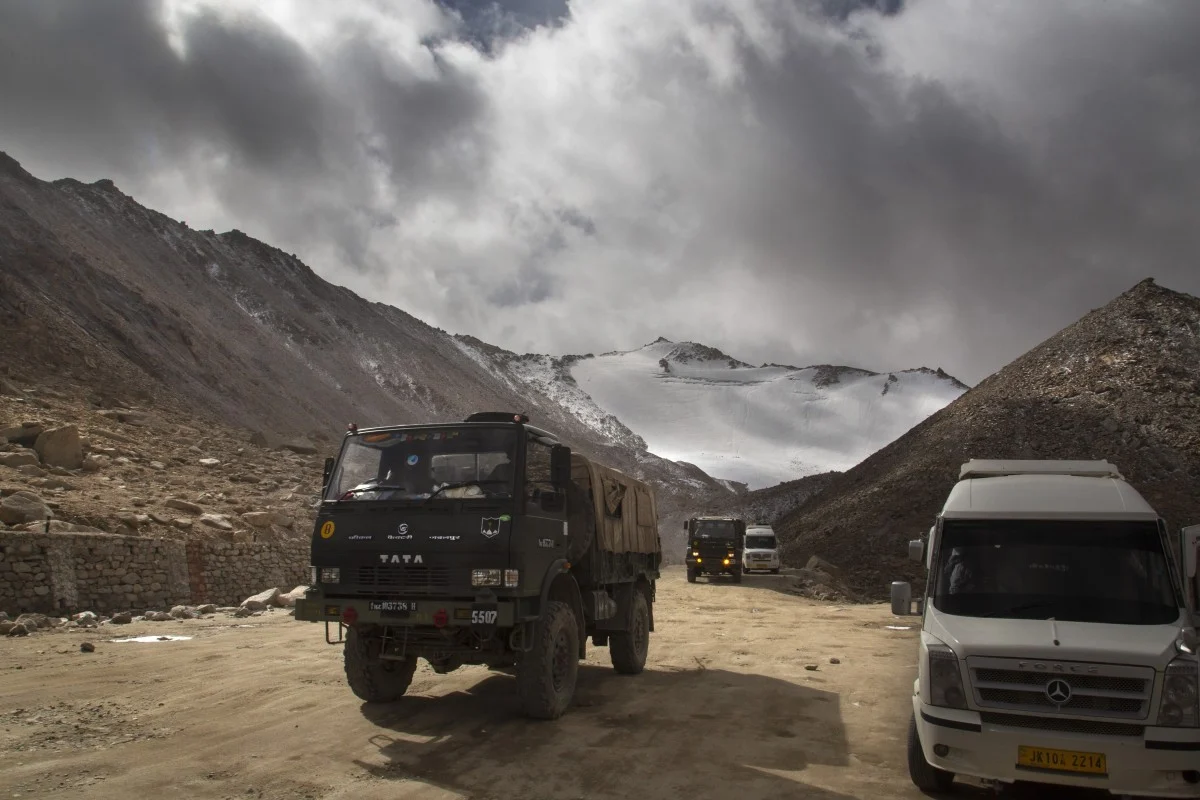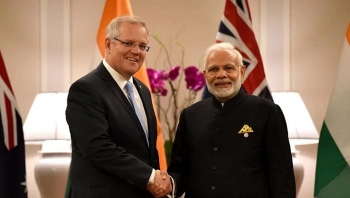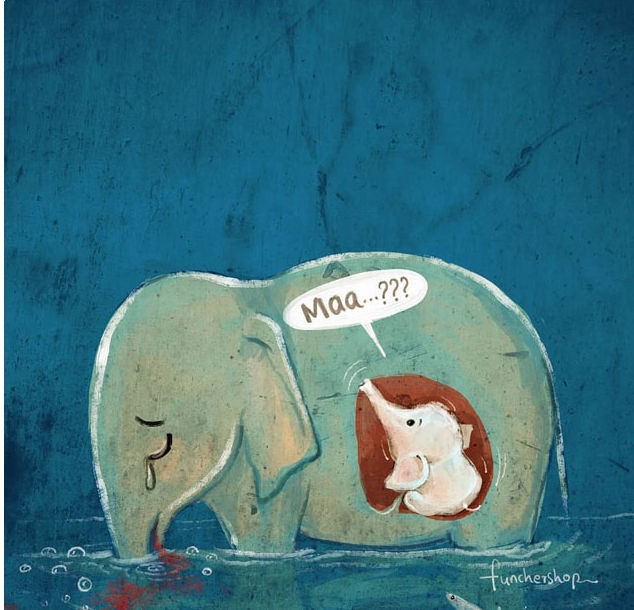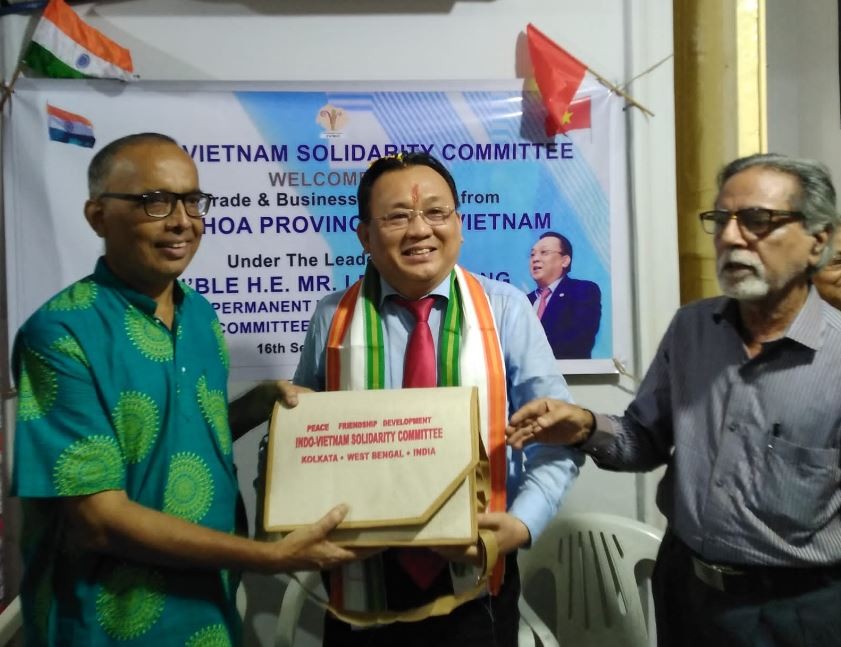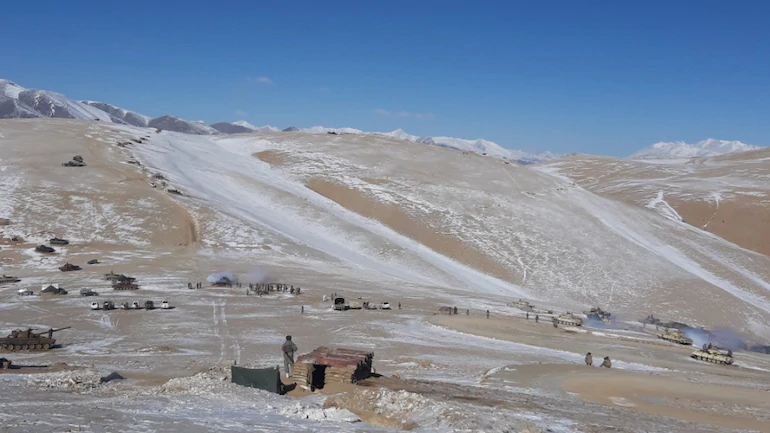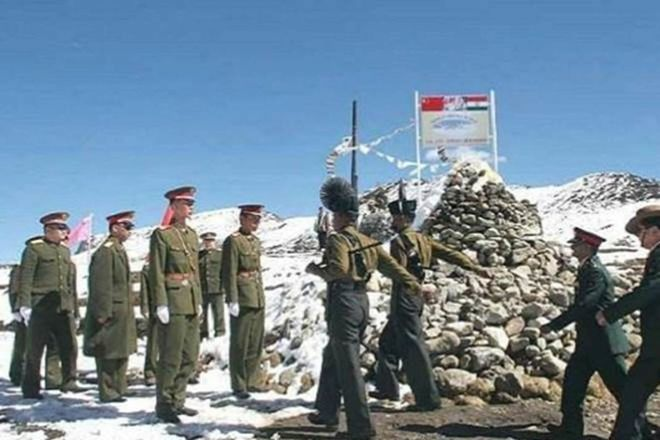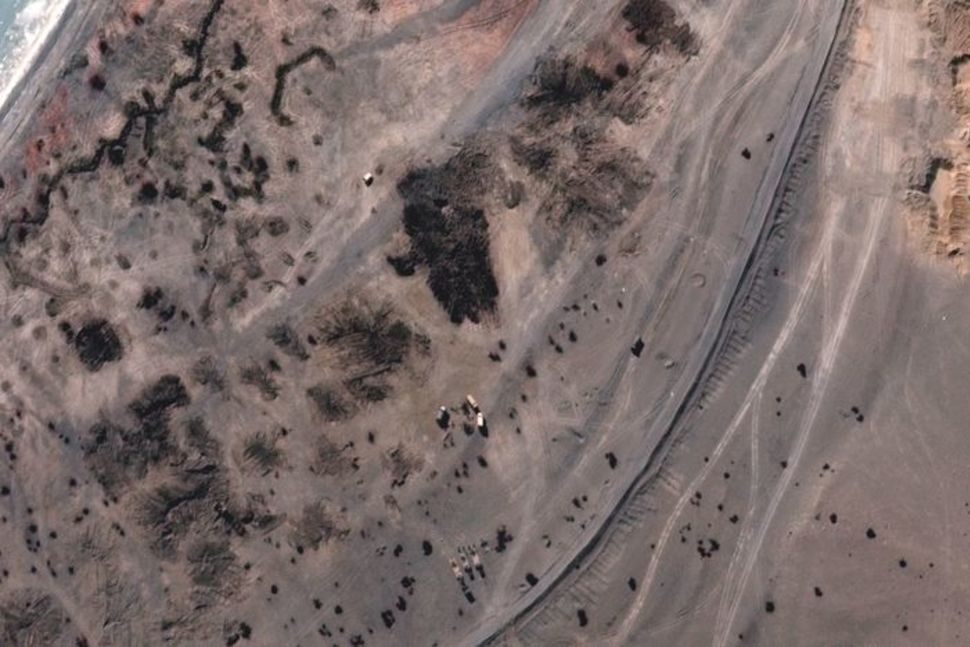China-India's border clash: starts "media war"
According to CNN, tensions have been growing in the Himalayas along with one of the world's longest land borders, with New Delhi and Beijing both accusing the other of overstepping the Line of Actual Control (LAC) that separates the two. The territory has long been disputed, erupting into numerous minor conflicts and diplomatic spats since a bloody war between the countries in 1962.
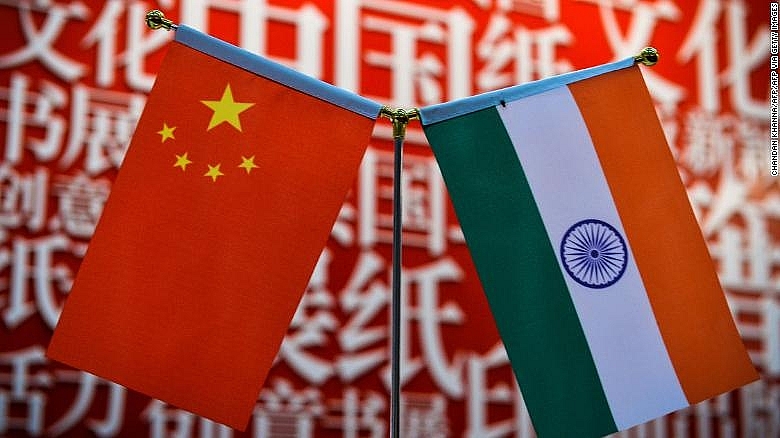 |
| Photo: CNN |
On Saturday, military leaders met at the border to "peacefully resolve the situation in the border areas," according to a statement from India's foreign ministry. Even today, just what occurred on the ground in the highly militarized region remains unclear -- in part because the main body of this distinctly 21st-century conflict has so far mostly played out through propaganda, strategic leaks, and aggressive posturing in the media.
Ahead of Saturday's meeting, Chinese broadcasters aired footage of People's Liberation Army (PLA) maneuvers in the region -- complete with planes and trucks full of troops -- in what state media described as "demonstrating China's capability of quickly reinforcing border defenses when necessary." Unconfirmed -- and in some cases, debunked -- videos have also circulated on both Chinese and Indian social media purporting to show troop incursions and scuffles between soldiers.
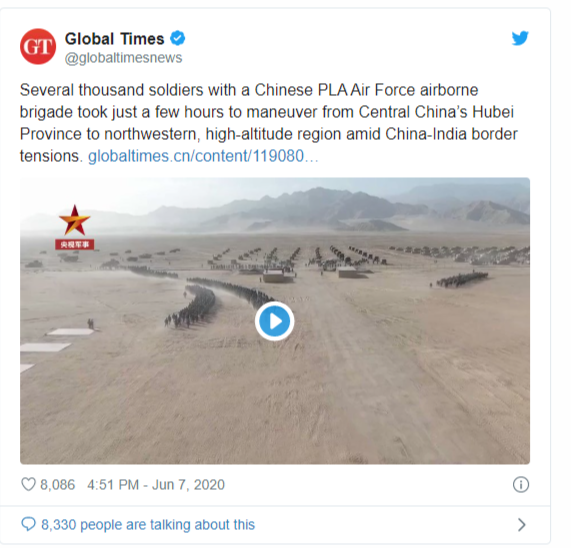 |
Both Chinese President Xi Jinping and Indian Prime Minister Narendra Modi have built public support in large part on nationalism and a promise of future greatness. This often translates into jingoism and aggressive rhetoric, particularly when playing to a domestic audience.
Such an approach was evidenced in Chinese coverage of the PLA maneuvers in the Himalayas. Equally, despite Delhi's announcement Saturday of easing tensions, leading Indian government figures struck an aggressive tone Monday, with Home Affairs Minister Amit Shah telling a rally of the ruling Bharatiya Janata Party (BJP) that "any intrusion into the the borders of India will be punished."
The most striking aspect of this news article and video is its timing – less than a day after India and China held a meeting at Moldo near Chushul, represented by the XIV Corps Commander on the Indian side and Commander of the South Xinjiang Military District from the Chinese side. Both sides had barely declared through respective foreign ministries their intention to peacefully resolve the impasse through diplomatic channels, that this news and video were served on Global Times as a veiled threat to India.
In response to the action of Beijing, Defense Minister Rajnath Singh also weighed in Monday, saying: "I would remind everyone, India's leadership will not let our self-respect suffer. India's policy is clear, we won't hurt any country's integrity and dignity. At the same time, we will not let any country to hurt our integrity."
According to the Hindustan Times, under this strategy, its version of ground position maps and videos are leaked among the influencers to create political friction within the enemy country and seed doubt in the mind of the adversary on his capability to fight. Exaggerated information about deployed weapons systems against the enemy is circulated through official media even if the theatre weapons are untested or unproven in the field.
The basic idea is to overwhelm the enemy into a panic so that his capacity to negotiate is weakened.
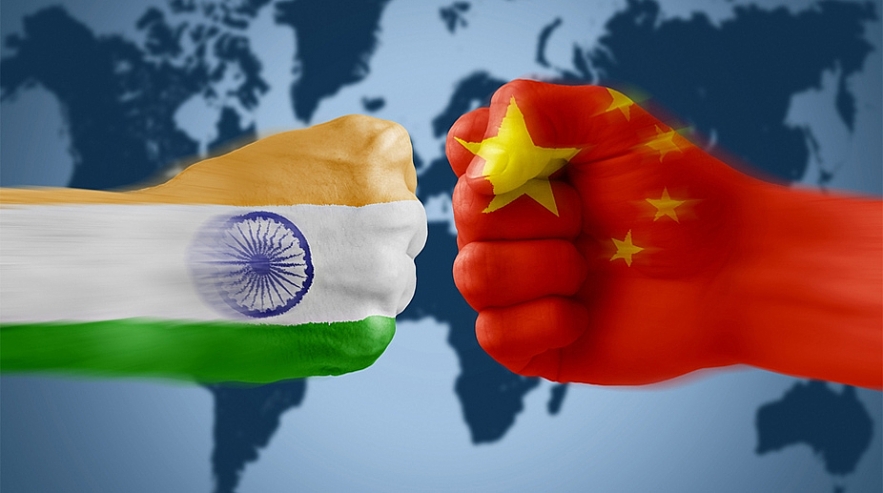 |
| Photo: The Statesman |
Just like the 73-day Doklam stand-off, the Chinese PLA is up to its old tactics to weaken the Indian resolve in the on-going stand-off at Pangong Tso and Galwan River in Eastern Ladakh. With the battle theatre totally transparent to the engagers through technology, the Chinese misinformation campaign has shrilled the pitch to seed the minds of the public with mistrust towards their government through tailored images and conjured up huge deployments to convey the threat of an imminent conflict.
Although China marched way ahead of upgrading border infrastructure in comparison to India at the turn of the millennium, New Delhi after an initial lag, is fast catching up by building strategic roads right up to patrolling posts in the eastern, middle and western sector of the Line of Actual Control.
Faced with a daunting Himayalan terrain in comparison to the flat Tibetean plateau, India is surely nullifying the Chinese military advantage. The standoff in eastern Ladakh and the belligerence of the PLA should be understood in this context.
If China's propaganda and very public PLA deployments are designed to persuade India to back off, Delhi may be looking for similar influence in emphasizing and building its international ties, linking the border issue to other disputes China has in the wider Asia-Pacific region.
Last week, India and Australia signed two bilateral military agreements in the "first step in deepening of the defense relationship" between the two Indo-Pacific powers. India has also been increasing its defense cooperation with the US, including with the annual Malabar naval exercises, also involving Japan.
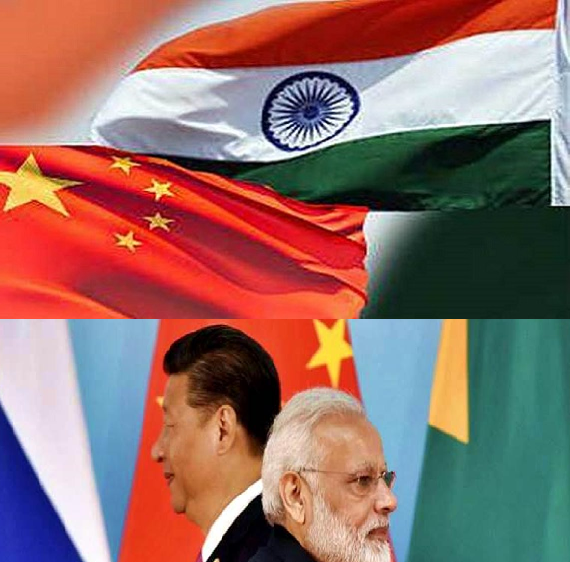 |
| Washington Post said – ‘A border clash between the world’s biggest nations’ |
This strategy has not gone unnoticed in Beijing. China Daily, another state-run newspaper, said in an editorial that "contrary to the sober-minded stance adopted by China and India, some excitable politicians in the United States seem eager to whip up hostilities between the two giant neighbors."
"(Washington's) offer to help may have emboldened some in India to take a tougher stand against China in order to 'defend its pride'," the paper added.
Writing late last month, Chinese analyst Long Xingchun warned Delhi to "keep a sober head to not be used as cannon ash by the US."
"Although China's relationship with the US is tense, the international environment for China is much better than it was in 1962 when India started and (was) crushingly defeated in a border war with China," Long wrote. "In 1962, the national strength of China and India were comparable. Today by stark contrast, China's GDP is about five times that of India."
For now, outright aggression is confined to the media. But with tensions running hot despite the efforts of military figures Saturday, the likelihood of this problem going away soon seems highly unlikely, according to the cnn.
 | COVID-19 treatment: South Korea, India authorise emergency use of remdesivir South Korea and India said on Wednesday they have approved the emergency use of Gilead Sciences Inc's remdesivir to treat COVID-19 after a government panel ... |
 | Motorcycle catches fire while spraying disinfectant in India As people take several measures to sanitise and curb the spread of COVID-19 in India, here is an instance of what could go horribly wrong. |
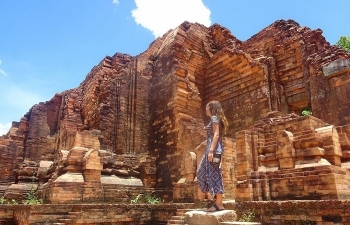 | More proofs of 'Vietnam-India connection' in newly unearthed 1100-yrs-old Shiva Linga The My Son temple complex where the Shiv limgam has been discovered, is one among the many archaeological remnants in Southeast Asia that are testimony ... |
In topics
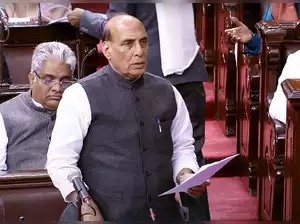 World
World
China’s Bid to ‘Change Status Quo’ on LAC Thwarted, says Indian Defence Minister Rajnath Singh
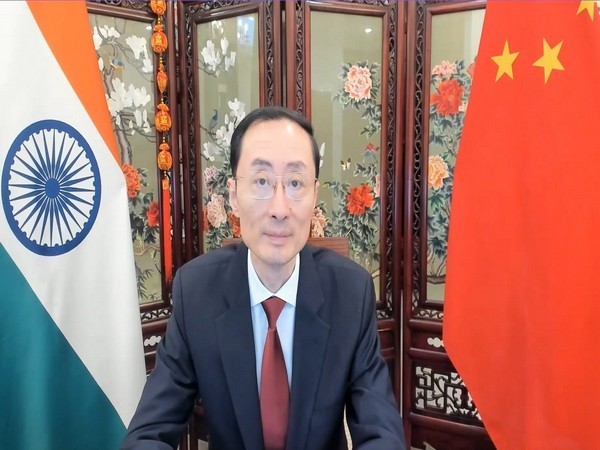 World
World
Enough Room in World for China, India; Let's Not Interfere in Other's Affairs, Says Outgoing Envoy
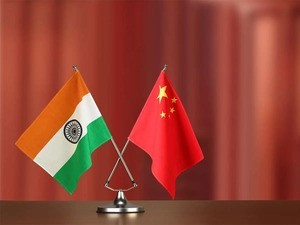 World
World
India, China to Complete Disengagement in Gogra-Hotsprings by September 12, MEA Says
 World
World
Chinese hackers connection still active in Indian computer systems, US firm said
Recommended
 World
World
Pakistan NCRC report explores emerging child rights issues
 World
World
"India has right to defend herself against terror," says German Foreign Minister, endorses Op Sindoor
 World
World
‘We stand with India’: Japan, UAE back New Delhi over its global outreach against terror
 World
World
'Action Was Entirely Justifiable': Former US NSA John Bolton Backs India's Right After Pahalgam Attack
Popular article
 World
World
US, China Conclude Trade Talks with Positive Outcome
 World
World
Nifty, Sensex jumped more than 2% in opening as India-Pakistan tensions ease
 World
World
Easing of US-China Tariffs: Markets React Positively, Experts Remain Cautious
 World
World

